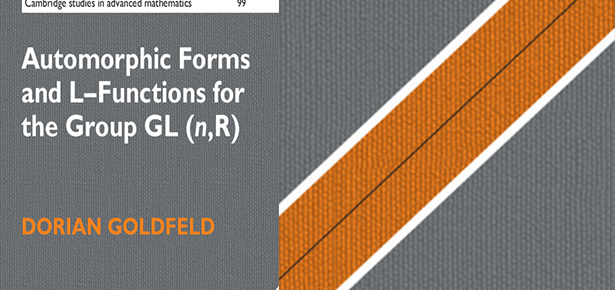
In the first decade of this century, I took two periods of study leave at Columbia University in New York City. I was partly motivated by a desire to spend time with our daughter Jude, an artist living then and now in New York. But also I was able to have many enriching conversations with Pat Gallagher, whom I had gotten to know as a graduate student at Columbia – and incidentally whose work is finding many applications in my current areas of interest.
I was also able to attend a special seminar series at the Institute for Advance Study Princeton on automorphic forms and L-functions and take several courses with Dorian Goldfeld on a related topic, and attend the New York joint CUNY, NYU, Columbia number theory seminary and dinners. It was during one of these latter that Dorian asked if I would write a software package in Mathematica for the book he was writing on “GL(n,R)”, a group which for quite deep reasons is important in the field of automorphic forms and L-functions in number theory. His concept was that the intensive matrix manipulation, and other computations, such as finding the symbolic form of Casimir operators, would be greatly assisted by having a package of related functions.
Now I had had some experience with Mathematica programming having supervised a PhD candidate Rene Ferdinands (now at the University of Sydney) who used its symbolic matrix inversion and simplification facilities as part of solving a system of ODE’s with an application to that popular Australian sport cricket. I said yes to Dorian, not knowing the task ahead was not light.
As the chapters of Dorian’s book appeared as drafts I would go through them, doing some editing and thinking through which parts would lend themselves to computation. Along the way I learnt some of the tricks of the trade of mathematics expository book writing – such as repeating definitions near where they are used, lightening the burden on the reader’s memory. In the end the manual for the software came to over 70 pages, and Cambridge generously agreed to include it as an appendix.
This book I believe fills a large gap in our available texts, especially for beginning researchers. It is very concrete, focusing on the group SL(n,Z) acting on GL(n,R), but building up progressively through n=2, n=3 and then the general case. It includes finely worked full proofs. Dorian had the benefit of many conversations with another Columbia mathematician, Herve Jaquet, who was a founder of the theory of L-functions and automorphic forms in the wider setting of Adels, which Dorian covered in later works, also published by Cambridge.
The software “GL(n)pack” is available here.
Find out more about Equivalents of the Riemann Hypothesis, available as a 2-volume hardback set and separate volumes 1 and 2.
Also check out Automorphic Forms and L-Functions for the Group GL(n,R) by Dorian Goldfeld
Latest Comments
Have your say!